PALESTINIAN-LINKED TERRORISM IN THE 1970s AND 80s
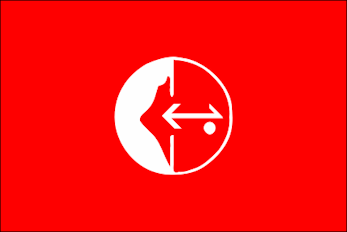
PFLP flag Between 1968 and the early 1980s, various Palestinian groups attacked Jews and Israeli institutions around the world and also made some attacks on targets that didn’t necessarily have a direct connection to Israel. Sometimes hostages were taken and soldiers were kidnaped to secure the release of imprisoned Palestinians. In one deal in 1985, four Israelis were traded for 1,100 Palestinians.
The Palestinian Liberation Organization (PLO) and other Palestinian resistance groups staged a number of terrorist attacks to bring international attention the plight of the Palestinian people. The international response to the terrorist-resistance activities of the PLO and other Palestinian groups at the time was mainly disgust and revulsion. Outside the Arab-Muslim sympathy was more on the Israel side.
Early Palestinian-linked Terrorist Attacks
Many of the earliest Palestinian-linked terrorist attacks were carried out by the Front for the Liberation of Palestine (PFLP). These include the hijacking of an El Al plane traveling from Rome to Tel Aviv in July 1968; the attack of an El Al plane in Athens in December 1968, which left one person dead, and an attack on an El Al plane in Zurich in February 1969, that killed one crew man.
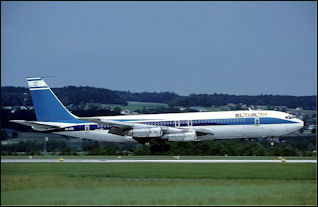
El Al 707 at Zurich, 1982 In July 1968, Palestinian terrorists hijacked El Al Flight 426 as it flew from Rome to tel Aviv. The plane, which carried 10 crew members and 38 passengers, was diverted to Algiers. The hijackers—secular leftists — demanded the release of comrades imprisoned in Israel. Forty days of negotiations followed. The event received quite a lot of media attention. In the end the passengers were released unharmed. The hijacking is regarded by some as the beginning of modern terrorism. If nothing else it demonstrated that terrorism can be an effective marketing tool to bring attention to a cause that otherwise would be ignored in the media. Zehdi Lahib Terzi. The PLO’s United Nations observer, later told The New Yorker, the seizure of Flight 426 “awakened the media and public opinion much more...than 20 years of pleading.”
In 1970 the PFLP hijacked three New-York-bound jets: a TWA Boeing 707, a Swissair jetliner and a Pan Am 747. The first two planes were held for ransom in Amman, Jordan. The Pan Am plane was blown up seconds after all the passengers were let off. An attempt to hijack an El Al plane around the same time failed. A forth plane, a BOAC jetliner, was hijacked and brought to Jordan, where it and the TWA and Swissair jets were all blown up.
The PFLP was responsible for a bomb that destroyed a Swissair plane bound from Zurich for Tel Aviv on February 13, 1970, killing 47 people aboard, including 17 Israelis. The PLO was also involved in the 1973 seizure of the Saudi embassy in Khartoum, the murder of two Belgian and one American diplomat and an attack on a bus at the Munich airport.
These attacks did not win the Palestinian cause much sympathy but they were affective in grabbing newspaper headlines and were a model for groups in Ireland and Spain and throughout the world. The attackers were fighting for the Arab and Palestinian cause not Islam.
Early Terrorist Attacks in Israel
The PFLP was also implicated in the bomb attack in the Mahane Yehuda market in Jerusalem on November 22, 1968, which killed14, including two Arab civilians, and a bombing at Hebrew University.
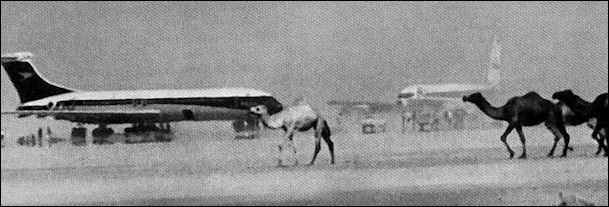
Dawson field
In the mid 1970s there were a number of attacks on Israel. On April 11, 1974, Palestinian gunmen from southern Lebanon infiltrate the Israeli town of Qiryat Shimona and opened fire on women, children and soldiers, killing 16 civilians. On May 15, 1974, Palestinian infiltrators held 100 pupils hostage in a school in the town of Maalot in northern Israel. Israeli troops stormed the building, killing three gunmen after they killed 21 children. A total of 70 were wounded.
On March 6, 1975, Palestinian gunmen killed 18 civilians at a Tel Aviv hotel. On July 4, 1975, a bomb exploded in downtown Jerusalem, killing 14, including three Arab civilians. On March 11, 1978, Arab gunmen landing from the sea opened fire on an Israeli bus on the north-south coastal highway, killing 37 and wounding 87. In May 1980 Arab gunmen opened fired on Jews on their way home from a synagogue in Hebron, killing six and wounding 17.
Jews also carried out attacks against Arab targets. In July 1983, masked Jews opened for on Arab students at the Islamic College in Hebron, killing 3 and wounding 33. In May 1990, an Israeli man, Ami Popper, opened with a machine gun on Arabs waiting at a highway junction at Rishon Lezion, killing seven and injuring 10.
Munich Olympics Attack in 1972

Munich, front of building On September 5, 1972, in the middle of the Munich Summer Olympics, eight members of the Black September Palestinian terrorist group stormed into to the apartments of the Israeli Olympic team at the athletes village, killing two athletes, taking nine others hostage, and demanding 1) helicopters and planes for their escape, 2) the release of 200 Palestinian prisoners in German jails and 3) safe passage for them out of Germany. By the time the tragic event ended, 17 people were dead, including 11 members of Israel's Olympic team.
The terrorists were disguised in running suits. They were spotted scaling the fence into the Olympic village at 4:30am but guards assumed that were athletes who were returning after a late night of partying. Once inside the village they opened the bags they were carrying and pulled out Kalashnikov and made their way to the quarters of the Israeli team.
At 4:55am the terrorists knocked on the door of the Israeli team. An Israeli coach answered the door. After seeing a weapon he threw himself against the door and shouted a warning to his sleeping roommates. Before he could finished he was shot down in a burst of bullets.
Some athletes escaped by breaking windows with their hands and elbows and leaping to the street below as bullets whizzed past their heads. In one room an immensely strong wrestler held off the attackers by putting his back to a door. In another room a weightlifter confronted the terrorists with a knife. He was shot to death. Nine athletes and coaches — wrestlers, weightlifters, a fencing coach, a track coach and a rifle team coach — who were unable to escape were taken hostage. They were roped together on their beds.
Shaul Ladany, an Israeli racewalker, escaped by slipping out a window when another athlete shouted an alarm. Later he showed up at the apartment of U.S. track coach Bill Bowerman, shouting to be let in. When Bowerman asked why, Ladany said, "The Arabs are in our building." After Bowerman asked him why he didn't "push them out," Ladany said, "They have guns...two people are dead."
Unsuccessful Rescue at Munich

Munich, back of building The quarters holding the Israeli team were sealed off by 600 uniformed guards. Armored cars patrolled the streets. Israeli Prime Minister Golda Meir refused to meet the hostage-takers demands or negotiate with the terrorists, and proposed giving the terrorist money and substitute hostages. The kidnappers refused. The German Foreign Ministry contacted the heads of several Arab governments. None offered their help as mediators.
The morning Olympic events were held on schedule after the assault but the games were stopped in the afternoon with no word when they would resume. Many athletes were sealed in the athletes villages and many were worried that there events would be canceled.
The German government agreed to supply the terrorists with helicopters to take them to an airbase 15 miles away where a Boeing 727 plane was waiting to take them and the blindfolded hostages to an undisclosed Arab country. "From the balcony, we watched a flight of helicopters suddenly drop down and land near where were the standoff was," American marathoner Kenny Moore wrote in Sports Illustrated. "The cacophony of their engines echoing off the concrete buildings was such that we, spooked, thought it was machine fire."
The terrorists and the hostages arrived to Fürstenfled Air Base, where a plane was waiting for them. When three of the terrorists emerged from the helicopter to inspect the plane they were picked off by German sharpshooters. A forth fell to the ground and blasted out the ground lights. Another tossed a grenade into one of the helicopters, which exploded and burned. A firefight at the airport last for an hour. When it is over all nine hostages, the forth terrorist and one policeman were killed.
The German police had apparently miscalculated the number of terrorists. The terrorist who was not picked off by sharpshooters killed the hostages by setting off a grenade which blew up the helicopter where te hostages were.
Mossad Goes After the Munich Killers and the Aftermath of the Munich Olympics Attack
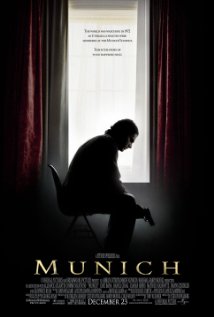
Munich, the film Newspapers around the world ran pictures of the burned out helicopter. The first Olympic that Germany had hosted since Berlin 1936 was marred by tragedy. When the episode had ended, five of the eight terrorists, eleven Israeli athletes and coaches and one German policeman had been killed. German police were praised for risking their lives to save Jews. Israel responded by launching reprisal attacks on guerilla bases in Syria and Lebanon.
The wife of one the victims received a death certificate that simply had “murder” written on. She was not allowed to see the body and her requests for more details were turned down. She speculates that her husband may have been killed by bullets from the German sharpshooters and the German government was attempting to cover that up.
After the attack on the Israeli Olympic athletes by the PLO’s Black September arm in Munich in 1972, Golda Meir directed the Mossad to find who was responsible and kill them. The Mossad effort to track down and kill these terrorists was the subject of the Steven Speilberg film “Munich”.
The campaign resulted in the murders of 11 members of Black September. Ali Hassan Salemeh, a security aide for Yasser Arafat and a key planner of the Munich attack, was one of the last to be killed. He was killed by Mossad agents in Beirut in 1979. In 1973, Mossad agents trying to kill Salemeh killed an innocent Moroccan waiter in Norway by mistake. The waiter was mistaken for Salameh.
Japanese Red Army Attack, Entebbe and Achilles Lauro

Entebbe Airport On May 30, 1972, members of the Japanese Red Army grabbed two suitcases from a conveyor belt in the passenger lounge of Tel Aviv’s Lod airport, pulled submachine guns and grenades and killed 24 civilians, including 16 Puerto Ricans on a religious pilgrimage, and wounded 76. All of the terrorists were killed except for one, who was released as part of a prisoner exchange with Israel in 1985.
On July 3, 1976, Israeli commandos raided Entebbe, Uganda and rescued 103 hostages seized by Arab and German terrorists on an Air France flight and brought to Uganda when it was under the control of Idi Amin. The raid on Entebbe took just 53 minutes, 2 minutes less than the dress rehearsal. The Israeli’s created a diversion by using grenades, bombs and flares at the far end of the airport to distract attention away from the old airport building where the hostages were held.
One of the Israeli soldiers who died in the raid was the older brother of future prime minister Binyamin Netanyahu. Netanyahu and another future prime minister Ehud Barak participated in the raid. Posing as a member of the flight crew, Barak directed the storming of the plane. The two men were part of the Israeli commando unit that also stormed a hijacked Sabena jet that landed at Tel Aviv airport in 1972 and freed its hostages.
On October 21, 1985, four gunmen in the Palestinian Liberation Front (sometimes allied with the PLO) hijacked the Italian cruise ship Achilles Lauro off the Egyptian coast, demanding the release of Palestinian prisoners in Egypt, Italy and elsewhere. One of the hijackers later said they didn’t intend to hijack the ship — they were only trying to get into Israel — but took drastic measures after they were discovered with their weapons in their cabin.
Leon Klinghoffer, a 69-year-old disabled American tourist, was killed with a bullet and his body was dumped in the sea along with his wheelchair. After the hijackers gave up the ship they departed for Egypt on a plane that was intercepted by American fighters and forced to land in Italy, where the hijackers were arrested, convicted and imprisoned. Two of the hijackers later escaped (one was caught) and the mastermind of the operation was released. Abus Abbas, one of he terrorist involved with the Achilles Lauro attack, was convicted in absentia in Italy in 1986 and captured in the 2003.
Abu Nidal
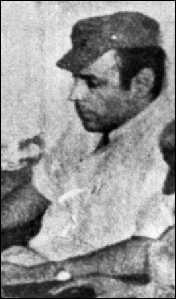
Abu Nidal Abu Nidal was one of the most notorious Palestinian terrorists. A former schoolteacher and rival of Arafat, he was born into a wealthy Palestinian merchant family in Jaffa under the name Sabri al-Banna but was raised in a refugee camp after his family was driven from their mansion and estate. He masterminded a number of spectacular terrorist attacks against Israeli and Western targets, PLO figures and Arabs accused of collaborating with Israelis in the 1970s and 80s.
Abu Nidal was a mysterious figure. He was rarely photographed and regarded as a master of disguise and is believed to have undergone plastic surgery. He fell out with Arafat in the 1970s and started his own group: The Fatah Revolutionary Council. Over the years he worked in Syria and Libya but was based primarily in Iraq.
Abu Nidal died at the age of 64 in Baghdad in August 2002. The circumstances of his death were mysterious. He was found with gunshot wounds to the head. It appeared that he shot himself. Some suspect he may have been murdered because there were reports that there were three bullet wounds in his body. Some say he was murdered on orders from Saddam Hussein. He had a number of health problems, including leukemia and heart disease and an addiction to painkillers.
Terrorist Attacks and Plane Highjackings Masterminded by Abu Nidal
Terrorists commanded by Nidal carried out more than 100 attacks in 20 countries that left 280 people dead (and maybe as many as 900). They blew up U.S. jetliners, gunned down Palestinians and attacked synagogues and hotels. Victims included Jews, Muslims, Arabs, Westerners, diplomats, tourists, journalists, worshipers, politicians and close associates of Arafat.

Achilles Lauro On December 25, 1985, terrorists under the command of Nidal attacked the El Al ticket counters at airports in Rome and Vienna, killing 18 and wounding 120. In September 1986, they shot up the Neve Shalaom synagogue in Istanbul, killing 22 Jewish worshipers and injuring 6.
On July 11, 1985, two bombs killed eight people and injured 89 in Kuwait, This was part a Abu Nidal plot to blackmail rich Gulf sates into paying him off to avoid being the targets of terrorist attacks. On July 11, 1988, five Abu Nidal gunmen attacked a Greek cruise ship, killing nine people and wounding 98.
In January 1991, Abu Nidal orchestrated the assassination of Arafat’s close aide and friend Abu Iyad in his apartment in Tunis. Nidal also organized the attempted assassination of the Israeli ambassador in Britain in June 1982. Victims of successful attacks included Issam Sartawi and Said Hammami, two Palestinians that pushed for contacts with Israel.
Abu Nidal was behind: 1) the bombing of a Pan Am jetliner at the Rome Airport in 1973 that killed 32 passengers; 2) the bombing of a TWA jetliner over the Aegean Sea in 1974 that left all 88 people on board dead; and 3) the hijacking of a Pan Am jetliner in Karachi that left 22 people dead.
In November 1985, Egypt Air Flight 648 was hijacked en route from Athens to Cairo by Palestinians who said they were part of Abu Nidal's Arab Revolutionary Command. The plane landed un Malta and two passengers, an American and an Israeli, were killed. Sixty passengers died when Egyptian commando stormed the plane. Only one of the hijackers survived the raid. He was captured by the F.B.I. in Nigeria in 1986.
Abu Nidal is believed by some to have conspired with Libyan leader Moammar Gaddafi to bring down he Pan Am flight over Lockerbie in 1988. When the attack was pulled Gaddafi reportedly paid Abu Nidal’s organization $15 million.
Carlos
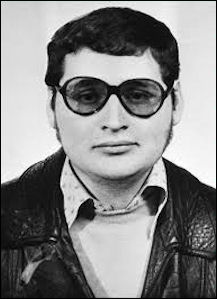
Carlos Ilich Ramirez Sanchez, alias Carlos the Jackal, is was another famous terrorist who was active in the 1970s and 80s. He was involved in several high profile terrorist attacks and spent 25 years on the run from Western authorities until he was caught in 1994. Carlos was nicknamed the Jackal because of his similarity to the assassin in the Frederick Forsyth novel "Day of the Jackal" who was hired to kill French President Charles de Gaulle.
In a Washington Post article Forsyth wrote: "Most of what has been written about him — often with his own connivance, for the man adores publicity — is myth...he tried to bazooka an Israeli jet at Orly and missed — twice...He spent 15 years hitting soft targets — innocents in cafes, trains, railway stations, airport; men, women and children who had nothing to do with Palestine or the Middle East. Cowardly target all. Even then he usually used "mules" to plant the bombs for him...He killed because he enjoyed it, and the more helpless the victim the better. Given a choice, he really prefers to shoot a man at point-blank range between the eyes...Life behind bars for those 83 unarmed corpses, and it couldn't happen to a more deserving man."
Carlos (Illich Ramirez Sanchez) was born in Venezuela on October 12, 1949. The son of a wealthy Communist lawyer in Venezuela, he was named Illich in honor of the Soviet revolutionary Vladimir Illich Lenin. Carlos joined the Venezuela's Communist Party and was sent in 1968 to a school in the Soviet Union for Third World students. He was dismissed two years later for his expensive tastes, but while he was there he made friends with members of Palestinian terrorist organizations.
Carlos was most active as a terrorist in the early and mid 70s. After laying low for half dozen years in the late 1970s and early 80 he launched a series of terrorist attacked to get his future wife, a German woman named Magdalena Kopp, released from a French jail after she was sentenced to four years in prison for transporting a car full of explosives. Carlos and Kopp got married and had a daughter. Kopp had also helped the Japanese Red Army, Basque separatists in the ETA, the German Badder-Meinhof gang and the Turkish Popular Liberation Front.
Carlos lived behind the Iron Curtain for may years but was forced for to go elsewhere after the Berlin Wall came down in 1989. Then he resided primarily in the Middle East. Photos in 1991 in a German magazine showed Carlos in Damascus, Syria.
Carlos Terrorist Attacks

Magdalena Kopp
Carlos was blamed fro the death of 83 people and injured of dozens of others in the 1970s and early 80s. He was regarded as a master marksman and master of seduction. His papers were not forgeries, but valid "false documents” issued by friendly governments.
In 1973 Carlos blew the jaw off British millionaire Edward Sieff, a Jew whose family owns Marks and Spencer's stores in London. In 1975 he was involved the takeover of the French Embassy on the Hague. In 1975 he fired two rockets at an El Al 747 in Paris and killed two French intelligence officers after hiding in a bathroom.
In 1975, Carlos masterminded the attack on the OPEC headquarters in Vienna where three people were killed and 11 oil minsters were held hostage for an $1 billion ransom. In 1976 he was involved in the hijacking of an Air France jetliner to Entebbe, Uganda.
In 1982 and 1986 Carlos orchestrated a car bombing and two train station attacks, each of which killed five people. Six people were killed and eleven wounded in a bombing of the Paris-Toulouse express train. A bombing on the Champs Elysees in Paris killed a pregnant woman and wounded 63 other people. A bombing in Marseille's killed five people and wounded 50. A bombing of the French cultural center in West Berlin killed one and wounded 23. The attacks ended after Jacques Chirac, then prime minister of France, cut some deals with Iran and militant groups based in Syria and Lebanon.
Capture of Carlos and His Trial

Ilich Ramirez Sanchez
(Carlos) at trial in 2000
Carlos was captured in Khartoum, Sudan on August 14, 1994 and brought to Paris in a sack by French agents. He was arrested while under sedation for an intestinal operation. Carlos was was captured after an unarmed Arab country provided Carlos with a diplomat passport and forced him onto a plane to Khartoum. Sudan gave up Carlos in part to get it named released from the U.S. government list of countries that supported terrorism.
Carlos had been tried in absentia in 1992 for the murder of three French agents, but was required to be given a retrial after his capture in accordance with French law. His trial after his 1994 arrest lasted for eight days. This time he was on trial for the murder of two French citizens and Lebanese man killed in the Left Bank apartment of Carlos’s girlfriend in 1975. The Lebanese victim was an accomplice-informer. The two unarmed French citizens were investigators who wanted to question Carlos in connection with an attack on an El AL jet.
At his trial in France, the portly, graying Carlos didn’t look like the world's most wanted terrorist. He insisted that he was a "professional revolutionary" and a "political prisoner" engaged in a "worldwide war and war the world will win." He called Israel a "terrorist nation" and said his arrest was part of a "Zionist plot." In December 1997, the 48-year-old Carlos was sentenced to life in prison for the three murders. When he heard the verdict he raised his fist and shouted, "Long live the revolution" and what sounded like "Allah akbar." He then gave a rambling four hour speech. In December 2011, Carlos was sentenced to another life sentence in a trial that ended with shouting for revolution and weeping for Moammar Gaddafi. France does not have the death penalty.
Lockerbie
In December 1988, , four days before Christmas, Pan Am Flight 103 was destroyed by a bomb over Lockerbie Scotland. A total of 270 people were killed, including 11 people on the ground and a number of American students returning home for the holidays. The plane was flying at 31,000 feet. The fuselage with 259 people aboard took 46.5 second to hit the ground. It is believed that most of the victims survived until the plane hit the ground.
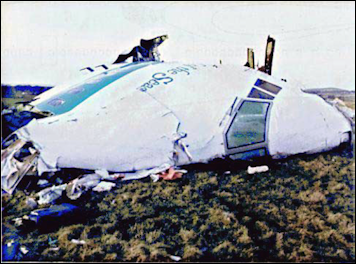
Steven Flannigan, a resident of Lockerbie, was on his way to a neighbor’s house by bicycle to give a Christmas present for his daughter, when a one of the jet engines and part of the wing slammed into his house producing a huge fireball. Only parts of his daughter were found, Nothing of his parents were recovered. Where the fuselage came down the body of a baby was found in a tree and dead girl was found still strapped to her seat, which had landed in a chimney. One man counted 18 bodies in his yard. Family members were given $3.3 million from Pan Am for each victim.
The bomb was comprise dof 280 grams of plastic explosives concealed in a Toshiba boom box packed in a Samsonite suitcase. British and American investigators located a fingernail-size piece of the bomb’s timer and traced it through its manufacturer to two Libyan intelligence officers, Abdel Basset Al Megrahi and Lamen Kashifa Fhimah who bought the boombox in Malta. They were indicted in the United States and placed on the F.B.I.'s most wanted list with a $4 million price on their head. Libya refused to turn them over.
Libya turned over Al Megrahi and Fhimah for trial during a period when Libyan leader Muammar Gaddafi sought closer relations with the West. In 2001, Al Megrahi was convicted in a Scottish court and given a life sentence in a Scottish jail with parole in 20 years for his involvement in the Lockerbie attack. Fhimah was acquitted and given a hero’s welcome in Libya. Gaddafi killed a camel in his honor.
Al Megrahi, a fromer Libyan intelligence officer who died in May 2012 at his home in Tripoli, claims he was innocent. A fragment of a circuit board of a timer device was found in the remains of a briefcase, which contained various articles of clothing traced to a clothing store in Malta. The owner of that store, Tony Gauci, claimed he recognized Al Megrahi as the purchaser of the clothes. There were some doubts about his testimony as he changed his story several times. Gauci is also said to have received perks from prosecutors including free trips to Scotland and $2 million in reward money. Al Megrahi was set free under a cloud of controversy in August 2009 on humanitarian grounds as he was diagnosed with terminal prostrate cancer. He received a hero’s welcome in Libya. [Source: Marcello Mega and Magnus Linklater, The Times, December 2011]
The Lockerbie crash was one of the worst plane crashes ever. Ten worst air accidents (as off 1999): 1) Pan-Am/KLM 747s in the Canary Islands on March 27, 1977 (583 dead). 2) Japan Airlines 747 on Mount Ogura, Japan on August 12, 1985 (520 dead). 3) Saudi 747/Kazahkstan Il-76 at Charkhi Dadri, India on November 12, 1996 (350 dead). 4) THY DC-10 near Paris on March 3, 1974 (346 dead). 5) Air India 747 over the Atlantic on June 23, 1985 (329 dead). 6) Saudi L-1001 at Riyadh airport on August 19, 1980 (301 dead). 7) Iran Air A300 over the Persian Gulf on May, 25, 1988 (290 dead). 8) American Airlines 273 at Chicago on May, 25, 1979 (273 dead). 9) Pan Am 747 over Lockerbie Scotland on December 21, 1988 (270 dead). 10) Korean Air 747 near Russia on September 1 1983 (269 dead).
Other Hijackings and Attacks
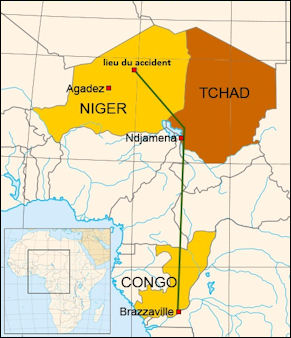
UTA Flight 772
Three Hezbollah members, including Imad Mughniyah, carried out the hijacking of TWA flight 847 on June 14, 1985. The flight was hijacked en route from Athens to Rome and forced to land in Beirut. For three days the plane shuttled 8,300 miles around the Mediterranean. At one point a U.S. Navy SEAL diver was forced to kneel and shot in the head. His body was dumped on the tarmac. The hostages remained on the ground for two weeks in Beirut before they were released and the hijackers escaped. One of the hijackers was arrested on terrorist charges in Germany in 1987.
In April 1986, a bomb exploded aboard a TWA jet en route from Rome to Athens. Five people were killed. Four American passengers, including an 18-month-old infant, were sucked out of the plane at 10,000 feet. The attack was masterminded by the Iraqi-backed May 15 Organization, headed by Palestinian terrorist Mohammed Rashid. Rashid was captured in Greece in 1988 and imprisoned. In 1996, he was released on good behavior and captured by the F.B.I. in Egypt and brought to the United States to stand trial for a 1982 bombing of a Pan Am jet that killed a Japanese citizen.
In April 1986, Le Belle, a West Berlin nightclub popular with America troops, was bombed. Three people were killed, including two American soldiers, and 230 were injured, including 79 American servicemen. A Libyan diplomat, two Palestinians and two Germans were charged in connection with the bombing. German prosecutors said they were acting on orders from Libyan intelligence. In retaliation American President Ronald Reagan ordered air strikes of Libya. At least 100 people died after U.S. planes bombed targets in the Libyan capital, Tripoli, and the Benghazi region. Around 66 American jets, some of them flying from British bases, took part in the attack. Among the dead was Gaddafi’s young daughter.
In September 1989, a French UTA DC-10 bound for Paris was blown up over Niger, killing 171 people. France blamed Libyan agents.
Israeli airman Ron Arad went missing after he bailed out from a crippled jet in 1986. He was captured by Shiite militiamen and turned over to Iran and that was the last anyone heard of him. Arad became a cause celebre in Israel. In 2004, family members offered $10 million for information on him.
Mossad Goes After Palestinian Leaders and Israel Blows Up Iraq’s Nuclear Power Plant
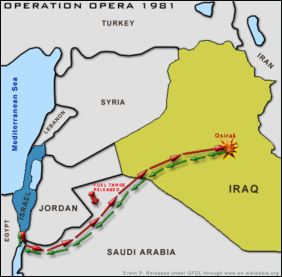
Israeli attack on
Iraq’s Nuclear Power Plant
In the 1970s and early 80s, the Mossad developed a plan to kill the “master terrorists” of the Palestinian movement. On the list were people like Arafat, Abu Nidal, George Habash and Ahmed Jibril, who managed to escape but many others were killed.
In 1979, Zoher Mohsin, the leader of the pro-Syrian Group A-Saika, was killed by a Mossad hit squad in France. In 1985, Israeli warplanes bombed a PLO compound in Tunis, in an apparent attempt to kill Yasser Arafat. Seventy-two people were killed but not Arafat.
In 1988, Khalil al-Wazir, Arafat’s senior deputy, known as Abu Jihad, was killed at his beachfront home in Tunisia by an Israeli commando team that arrived by sea and took out the leader but didn’t hurt his wife or child. In violent protest triggered by al-Wazir’s assassination Israeli troops killed 16 Palestinians
On June 7, 1981, Israeli jets destroyed the Iraqi Osirak nuclear power plant near Baghdad. Israel said the plant was capable of producing material that could be used to make nuclear bombs. At the time Iraq was an ally of the United States and U.S. President Ronald Reagan condemned the attack. Later, during the Persian Gulf War, U.S. Defense Secretary Dick Cheney sent a thank you letter to Israeli Air Force commander who ordered the attack.
Assassination Attempts of Yasser Arafat
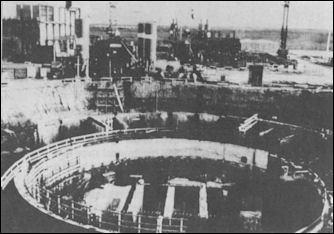
Iraq’s Nuclear Power Plant
before the attack
During the Israeli invasion of Lebanon in 1982, Sharon surrounded Arafat and his core supporters and tried to kill Arafat by bombing his bunker in Beirut. An Israeli sniper once had Arafat in his sights but was ordered to hold fire. Sharon had promised the United States not to harm him. Four times Arafat narrowly escaped being blown up by Israeli missiles. In Tripoli., Syria’s President Assad tried to have him assassinated.
Arafat dodged a bullet in 1985 when six Israeli warplanes bombed the PLO headquarters in Tunis in retaliation for a terrorist attack that killed three Israelis on a yacht in Cyprus. The building was demolished and 65 people were killed and more than 100 were injured. Arafat escaped with his life because he showed up late for a meeting he was scheduled to lead. The leader of Israeli intelligence at the time was Barak.
Arafat’s obituary and political obituary has been written many times. In April 1992, Arafat nearly died in a light plane crash in the Libyan desert that left the pilot and two others dead. Arafat lay bleeding in the sand for 15 hours. He endured a head injury which some blamed for his Parkinson’s disease. Many of his top aides were assassinated by Palestinian rivals. Arafat attributed his good luck to “dog sense.”
Image Sources: Wikimedia Commons
Text Sources: New York Times, Washington Post, Los Angeles Times, Times of London, The Guardian, National Geographic, The New Yorker, Time, Newsweek, Reuters, AP, AFP, Wall Street Journal, The Atlantic Monthly, The Economist, Global Viewpoint (Christian Science Monitor), Foreign Policy, Wikipedia, BBC, CNN, NBC News, Fox News and various books and other publications.
Last updated July 2012
